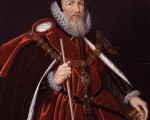
On this day in history events for 7 – 13 September.
[Read More...]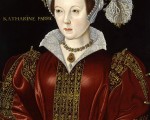
Catherine was born in 1512, most likely in London or Buckinghamshire. Her parents were Sir Thomas Parr, a favourite of King Henry VIII during his early reign, and Maud Parr, who served as a lady-in-waiting to Henry VIII’s first wife Katherine of Aragon. It is believed that Catherine was named after the Queen. Catherine had a younger brother named William, born in 1513 and a younger sister named Anne born in 1515.
[Read More...]
Historian Gareth Russell is the editor of our monthly Tudor Life magazine and he’s been working hard on scheduling expert articles and also expert talks for the next few months. We are thrilled to bits that so many historians and authors want to be involved in the Tudor Society by offering their knowledge and expertise to our members – a big thank you to them and to all our members too for your continued support.
Contributors to Tudor Life magazine in the coming months include:
[Read More...]
Today is the anniversary of the death of William Cecil, 1st Baron Burghley, at his home in London in 1598. Here is a bio of this extraordinary Tudor man:
[Read More...]
Here’s the August 2015 magazine with all our regular items and contributors plus lots of fascinating articles. This month we have a “Coronation Special” section with articles from a number of eminent historians….
[Read More...]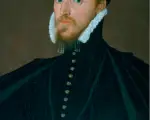
On 4th February 1520, Mary Boleyn married William Carey, a young, handsome, athletic man who a member of the King Henry VIII's household and also a distant cousin of the King. The match was well made, as Mary Boleyn's father, Sir Thomas Boleyn, was on the rise and was making a name for himself at court. The wedding took place at Greenwich and Henry VIII himself was present, giving the newly married couple a gift of 6s 8d.
Mary would go on to give her husband two healthy children. Mary's first child, a daughter named Catherine, quite possibly named after Queen Catherine of Aragon, was born in 1524. Catherine would become a constant figure at court until her death on 15 January 1569. At the age of just fourteen, she was appointed as a maid of honour to Anne of Cleves, Henry VIII's fourth wife. Then, on 26 April 1540, Catherine married Sir Francis Knollys and she went on to give her husband thirteen children! After the deaths of Henry VIII and his son and heir Edward VI, the Catholic Mary I came to the throne. As Protestants, Catherine and Francis feared for their safety and fled the country with their youngest children. Catherine and her family spent several years travelling the Low Countries, where Catherine was to give birth to one of her children.
Upon Mary I's death, Elizabeth I came to the throne and in 1559 Catherine was appointed as a lady of the Queen's bedchamber. Returning to England, Catherine took up this highly prized position. Her status meant that she was to tend to the Queen's personal needs, sleep at the foot of her bed when required and help dress the Queen, among other duties. It was a position of intimacy and one which Elizabeth I came to cherish.
Tragically, Catherine died on 15 January 1569 at Hampton Court. Queen Elizabeth I is reported to have been grief-stricken and she gave her beloved cousin a lavish burial at Westminster Abbey which cost £640 2s. 11d.
Mary Boleyn's second child, a son named Henry, was born on 4 March 1526. He too would become a prominent and impressive member at court throughout his life. In May 1545 he married Anne Morgan and the pair had twelve children together, nine of them sons. During his early years, he became a diplomat and a member of parliament. When Elizabeth I came to the throne, Henry was knighted and on the 13 January 1559 he was created Baron Hunsdon and granted substantial lands and a yearly pension of £4000. On 31 October 1560 Henry was appointed as Master of the Queen's hawks and then on 18 May 1561 he was created a Knight of the Garter.
Henry Carey played a prominent role over the years helping to protect the North from England's Scottish neighbours. On 23 October 1571, he was appointed warden of the east marshes, which afforded him even greater responsibilities in protecting the north of England. On the 16 November 1577, Henry was appointed as a member of the Privy Council, allowing him greater access not only to the Queen but to the administration of England's policies.
During 1583, Elizabeth I re-appointed Henry as captain of the gentlemen pensioners and in July 1585 he was appointed as Lord Chamberlain of the Household, as well as continuing his privy councillor duties. Henry was active in political life until his death on 23 July 1596 at Somerset House. Just like his sister Catherine, Henry Carey was buried at Westminster Abbey, the expenses of this paid by his cousin Elizabeth I. It is rumoured that on his deathbed Elizabeth I offered Henry the earldom of Wiltshire, a title held by his grandfather Thomas Boleyn. However, Henry refused the title stating that if Elizabeth did not think him worthy of the title while he was alive he would not accept it now that he was dying.
Elizabeth I died childless in 1603 and it was through Catherine and Henry's children that the Boleyn bloodline continued.
Sarah Bryson is the author of Mary Boleyn: In a Nutshell. She is a researcher, writer and educator who has a Bachelor of Early Childhood Education with Honours and currently works with children with disabilities. Sarah is passionate about Tudor history and has a deep interest in Mary Boleyn, Anne Boleyn, the reign of Henry VIII and the people of his court. Visiting England in 2009 furthered her passion and when she returned home she started a website, queentohistory.com, and Facebook page about Tudor history. Sarah lives in Australia, enjoys reading, writing, Tudor costume enactment and wishes to return to England one day.
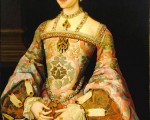
We tend to think of her as the woman who comes from nowhere, she’s not. In many ways she’s the most interesting, the most exciting, the best educated, and the cleverest of Henry’s wives. -David Starkey
Katherine Parr has been remembered through history as King Henry VIII’s sixth and final wife. The fortunate wife that survived. She has been labelled as merely Henry’s nurse, tending to the sickly king’s infirmities. Essentially, she is believed to be little more than Henry’s companion in his final years, with no great achievements of her own. She is often viewed as a wife of lesser importance, in contrast to the hugely popular Anne Boleyn whose legacy has been carried through centuries of intrigue and fame. This article intends to demystify the myths associated with Katherine Parr’s turbulent life, thus to reveal a more realistic view of a women who was well read, deeply religious and ultimately important during her time.
[Read More...]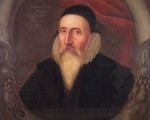
John Dee, astrologer, mathematician, alchemist, antiquary, spy, philosopher, geographer and adviser to Elizabeth I and various influential statesmen during her reign, was born in London on 13th July 1527.
[Read More...]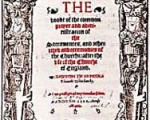
Thank you to Beth von Staats for joining us here on the Tudor Society today as part of her book tour for Thomas Cranmer: In a Nutshell. She is here to share an excellent article on Thomas Cranmer and the Book of Common Prayer – thanks Beth!
MadeGlobal Publishing is offering one copy of the paperback version of Thomas Cranmer: In a Nutshell as a prize for one lucky commenter. All you have to do to enter the giveaway is to comment below saying what you find so fascinating about Thomas Cranmer. You need to leave your comment by midnight (UK time) on Wednesday 15th July. The winner will be picked at random and contacted for his/her postal address. The giveaway is open internationally.
[Read More...]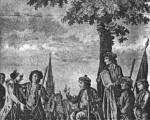
8th July 1549 was the beginning of Kett’s Rebellion. Robert Kett, a Norfolk farmer, agreed to lead a group of protesters who were angry with the enclosure of common land. The protesters marched on Norwich, and by the time they reached the city walls, it is said that they numbered around 16,000.
[Read More...]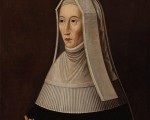
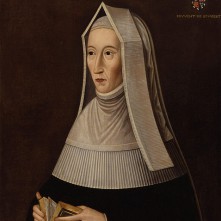
Lady Margaret Beaufort
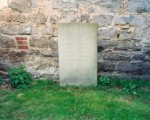
The Battle of Stoke field, which was fought on 16th June 1487, is known as the last battle between the Houses of York and Lancaster in the civil war we call the Wars of the Roses.
[Read More...]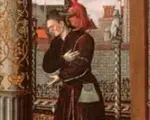
William Somer (Sommers) served as Henry VIII’s fool from June 1535 and just a month later got into trouble with the King. In July 1535, Eustace Chapuys, the Imperial ambassador, recorded that Henry VIII was so angry with Somer that he nearly killed him:
[Read More...]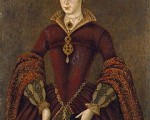
Queen Jane, commonly known as Lady Jane Grey, was born in 1537 (May or October) at Bradgate Park in Leicestershire. She was the eldest daughter of Henry Grey, Duke of Suffolk and Frances Brandon, daughter of Charles Brandon, Duke of Suffolk, and Mary Tudor, Queen of France. She was an intelligent girl and received a top-class education. Her main tutor was John Aylmer but she also met the top scholars of the day during her time living with Thomas Seymour, as his ward, and his wife Dowager Queen Catherine Parr. She also met famous reformists and humanists. She loved Greek and was a linguist with a knowledge of Latin and Hebrew, on top of the usual modern languages.
[Read More...]
Thank you to Tudor Life magazine contributor Kyra Kramer for this excellent article on Sir Henry Norris, Henry VIII’s Groom of the Stool, and the fall of Anne Boleyn. Over to Kyra…
Of all the men who were falsely accused of being Anne Boleyn’s companions in adultery, to point a finger at Henry Norris makes the most sense in terms of proximity and politics but the least sense in terms of his close relationship with Henry VIII.
If historian Greg Walker is correct in his 2002 proposal that Anne’s downfall was not due to her miscarriage of a male foetus in January of 1536 but instead to some hasty words she said in spring, then Norris was a ready-made target. One day in late April, the queen asked Henry Norris, who was the king’s groom of the stool and engaged to her cousin Madge Shelton, when he planned to wed. Norris hedged that he would wait just a bit longer, which vexed Anne. In her anger she told him he was looking for “dead men’s shoes, for if ought came to the king but good, you would look to have me”. This was a major blunder. It was treason to even think about the death of the king, let alone to talk about whom his queen might marry after his demise. Norris was appalled and Anne knew almost immediately that she had said something dangerous. She sent Norris to her chaplain, John Skyp, to swear that she was a good woman and faithful to the king.
[Read More...]